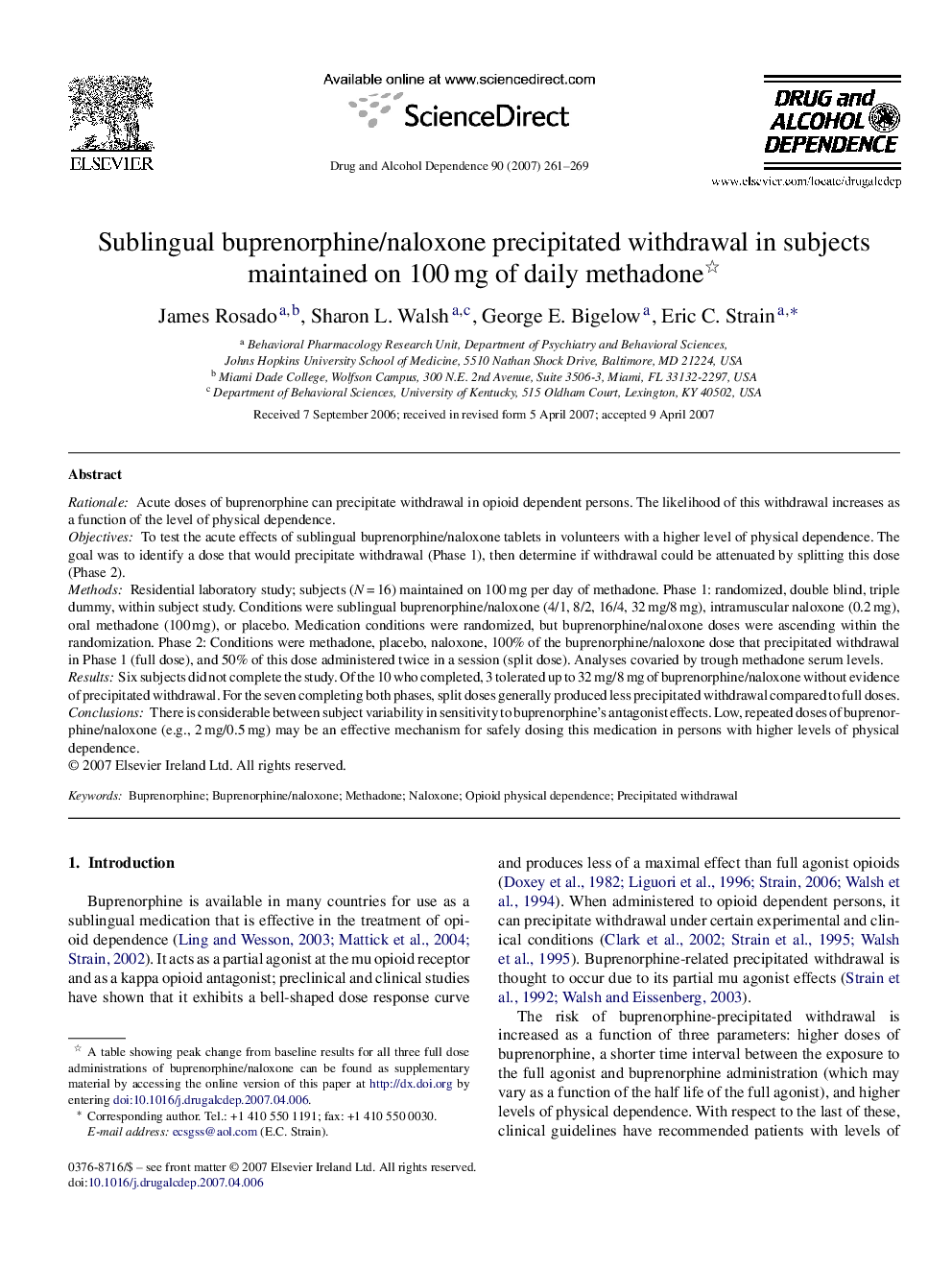| Article ID | Journal | Published Year | Pages | File Type |
|---|---|---|---|---|
| 1071722 | Drug and Alcohol Dependence | 2007 | 9 Pages |
RationaleAcute doses of buprenorphine can precipitate withdrawal in opioid dependent persons. The likelihood of this withdrawal increases as a function of the level of physical dependence.ObjectivesTo test the acute effects of sublingual buprenorphine/naloxone tablets in volunteers with a higher level of physical dependence. The goal was to identify a dose that would precipitate withdrawal (Phase 1), then determine if withdrawal could be attenuated by splitting this dose (Phase 2).MethodsResidential laboratory study; subjects (N = 16) maintained on 100 mg per day of methadone. Phase 1: randomized, double blind, triple dummy, within subject study. Conditions were sublingual buprenorphine/naloxone (4/1, 8/2, 16/4, 32 mg/8 mg), intramuscular naloxone (0.2 mg), oral methadone (100 mg), or placebo. Medication conditions were randomized, but buprenorphine/naloxone doses were ascending within the randomization. Phase 2: Conditions were methadone, placebo, naloxone, 100% of the buprenorphine/naloxone dose that precipitated withdrawal in Phase 1 (full dose), and 50% of this dose administered twice in a session (split dose). Analyses covaried by trough methadone serum levels.ResultsSix subjects did not complete the study. Of the 10 who completed, 3 tolerated up to 32 mg/8 mg of buprenorphine/naloxone without evidence of precipitated withdrawal. For the seven completing both phases, split doses generally produced less precipitated withdrawal compared to full doses.ConclusionsThere is considerable between subject variability in sensitivity to buprenorphine's antagonist effects. Low, repeated doses of buprenorphine/naloxone (e.g., 2 mg/0.5 mg) may be an effective mechanism for safely dosing this medication in persons with higher levels of physical dependence.
